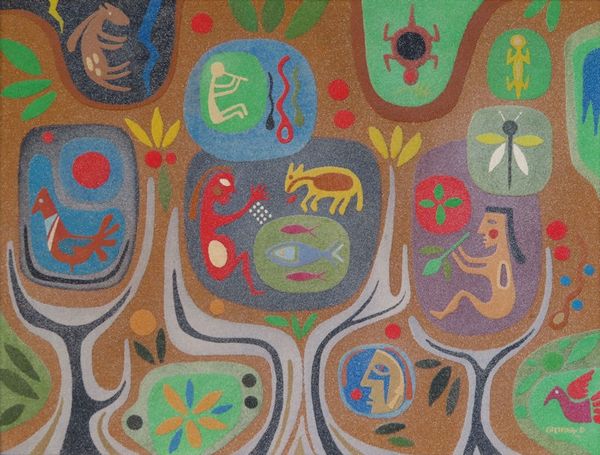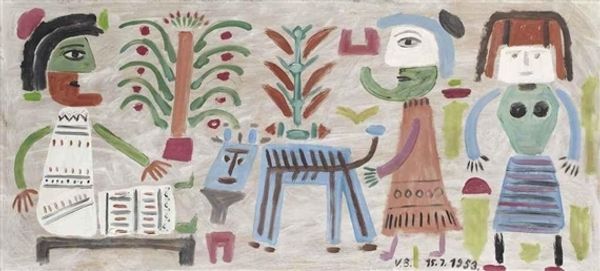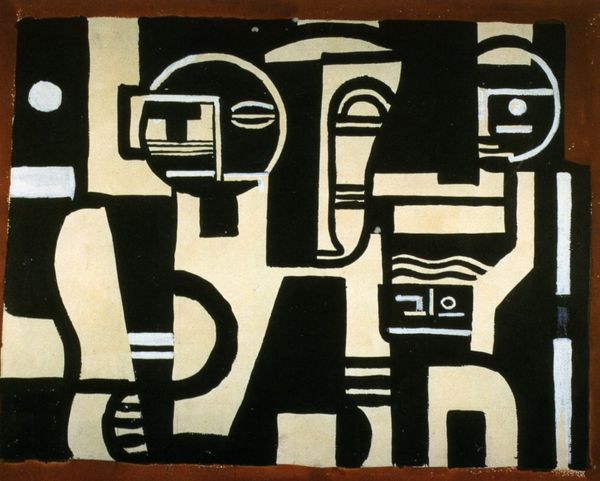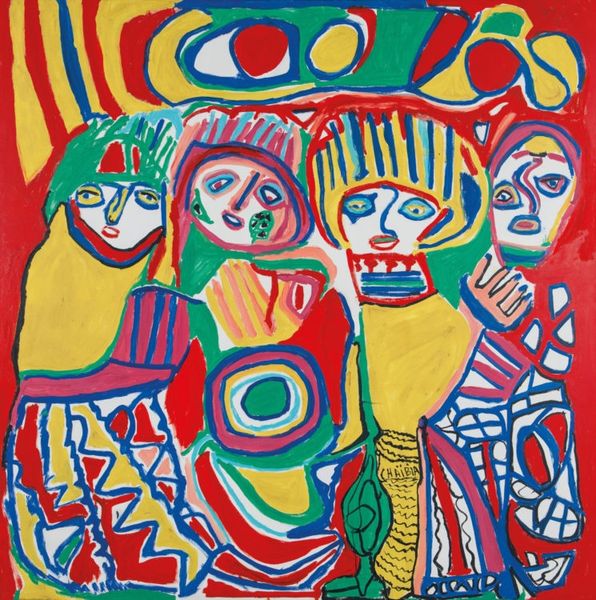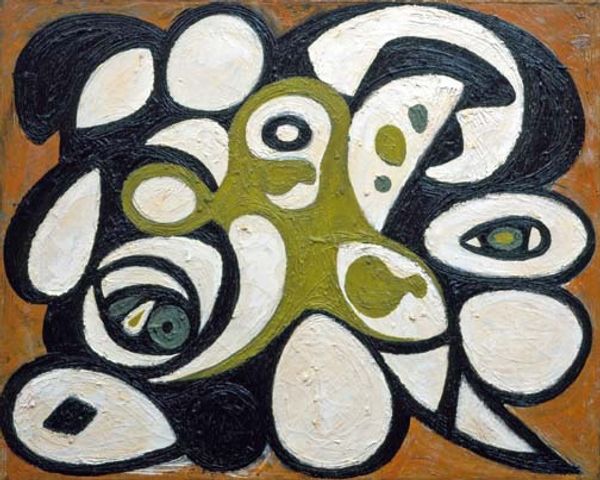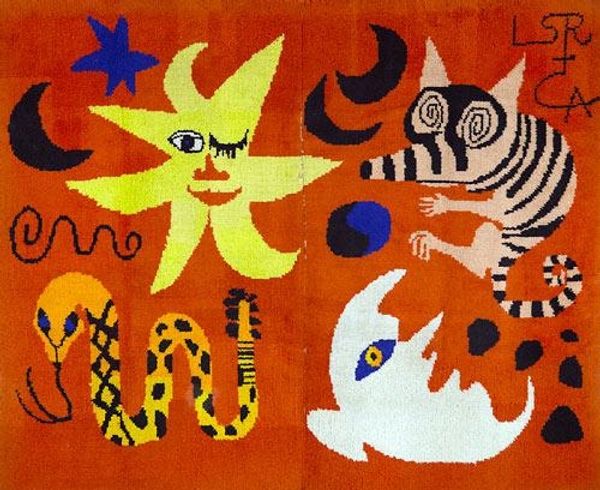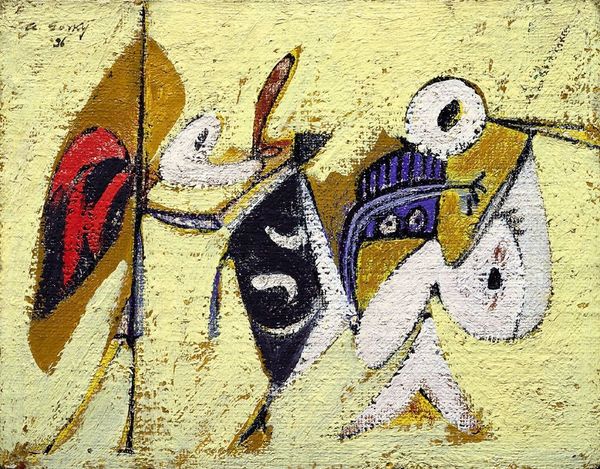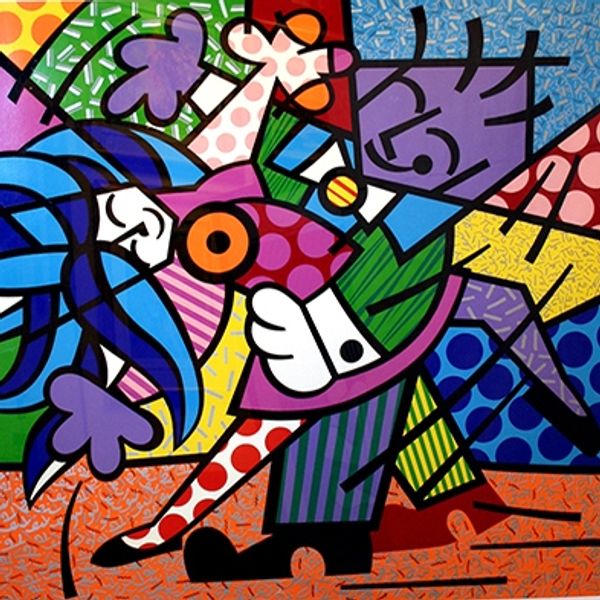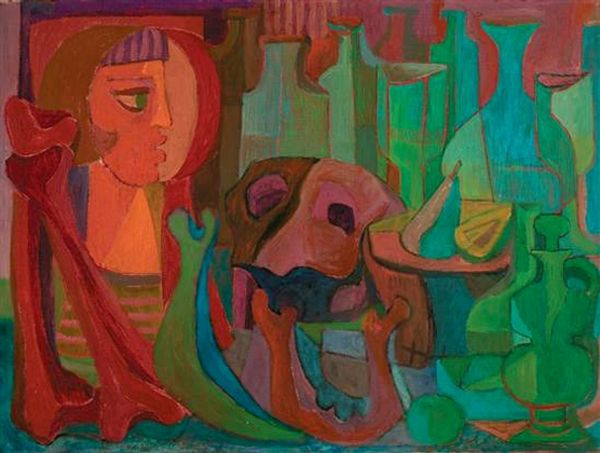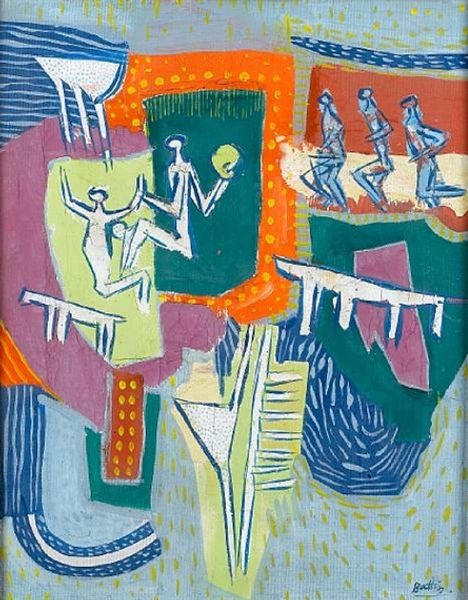
painting, acrylic-paint
#
portrait
#
cubism
#
mother
#
painting
#
acrylic-paint
#
figuration
#
famous-people
#
child
#
naive art
#
abstraction
#
surrealism
#
modernism
Copyright: Pablo Picasso,Fair Use
Curator: Welcome. Today, we’ll be examining Pablo Picasso’s "Francoise Gilot with Paloma and Claude," painted in 1951 using acrylic paint. Editor: It's a striking composition! I’m immediately struck by the use of color blocking; primary hues compartmentalize surreal figures in a rather unnerving way. There is something quite cold and emotionally detached in it. Curator: I agree that it's far from sentimental. Observe how Picasso renders his subjects—the angularity, the displaced features. The painting dismantles and reassembles Gilot and their children according to a distinct Cubist vocabulary that explores representation, simultaneity and perception. Editor: It certainly echoes the post-war anxieties around domesticity and fractured identities. Gilot was a strong artistic presence in her own right, often overshadowed in Picasso’s narrative. Viewing it now, through the lens of their tumultuous relationship, one can read her fragmented representation as a reflection of their power imbalance and the societal expectations placed on women as mothers and partners. Curator: While such biographical elements offer compelling interpretation, the power of the painting resides significantly in its formal construction. Notice the stark contrast between the dark, heavy lines defining the figures, and the flat planes of color surrounding them, a dynamic that guides the eye across the canvas. Editor: Agreed. Yet, I can't disregard the loaded cultural symbolism here. Each shape, each disfigurement signifies an imposed expectation, especially in relation to motherhood. Even the “naivete” seems less an aesthetic choice, more a reflection of the limited perspectives available to women in his gaze. Curator: An incisive observation. It is tempting to see the "naive art" solely through Picasso’s lens, without interrogating what role Francoise Gilot may have played in such renderings. Editor: Indeed. So, on one hand we can look at it as a dynamic and bold piece of painting; on the other, it becomes a potent reminder of the limitations of a singular, often male, perspective. Curator: A fascinating convergence of form and sociocultural significance.
Comments
No comments
Be the first to comment and join the conversation on the ultimate creative platform.

